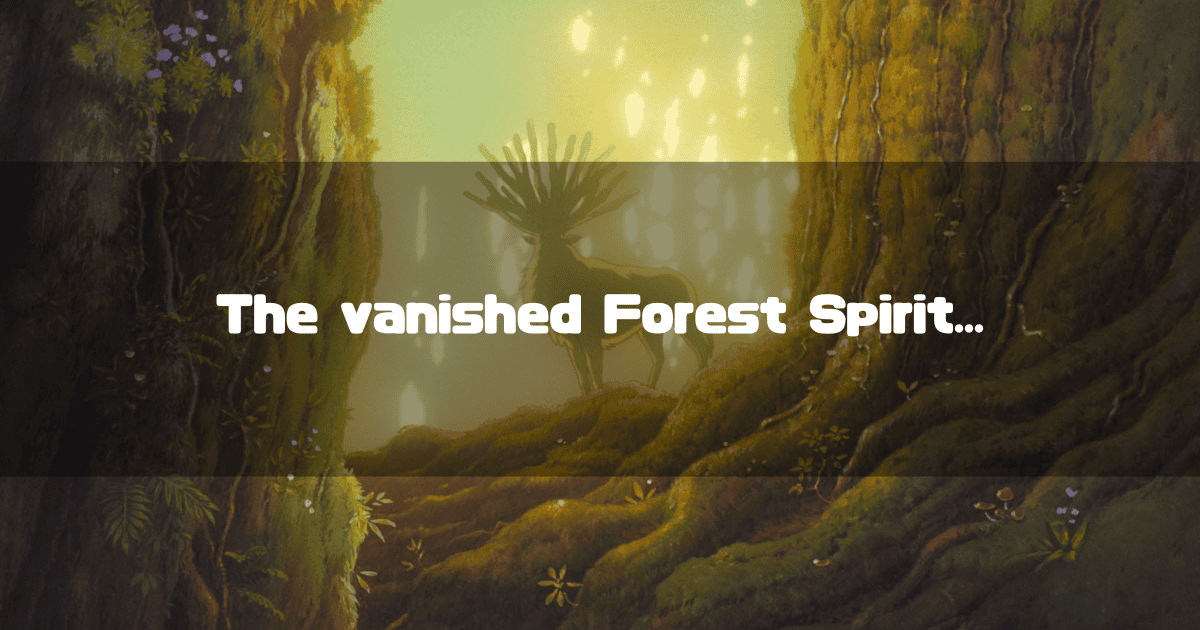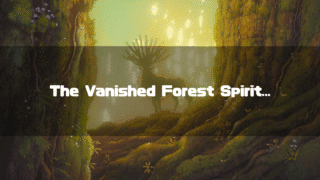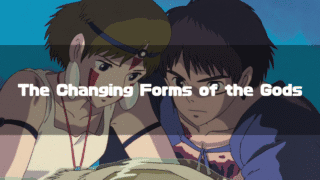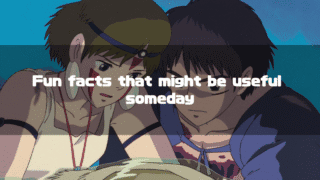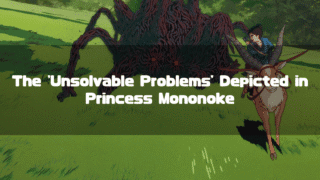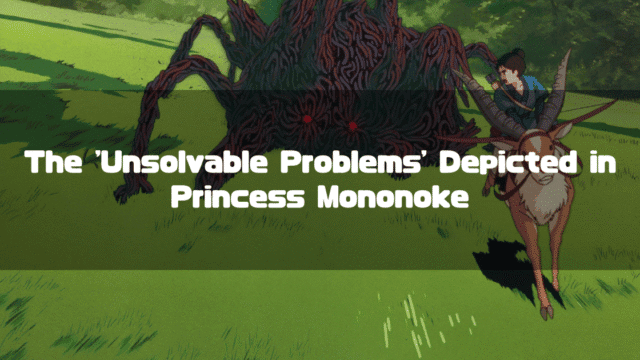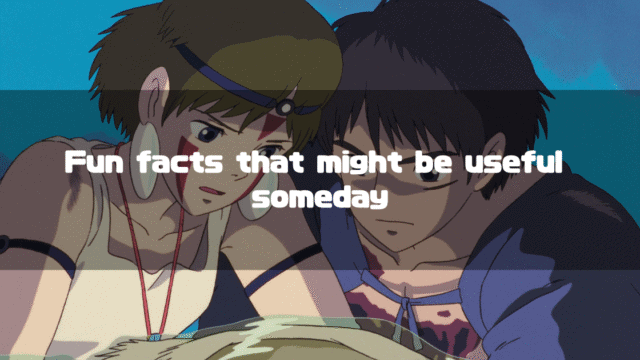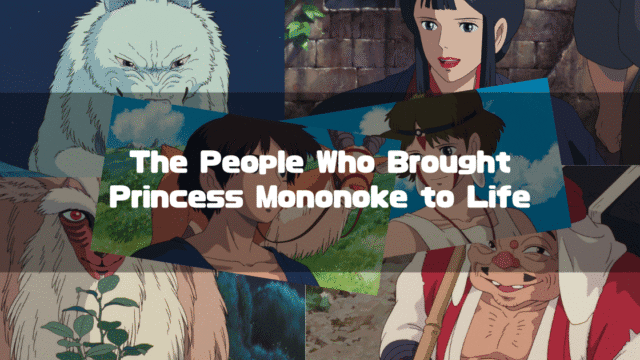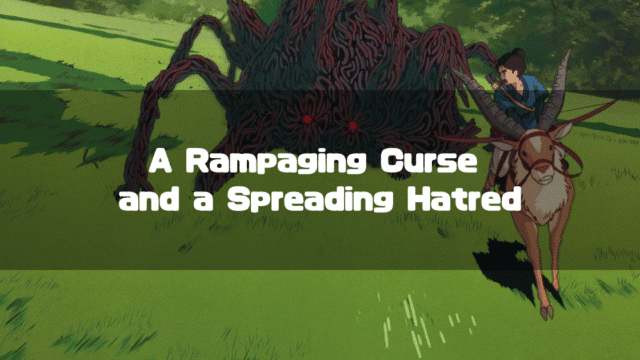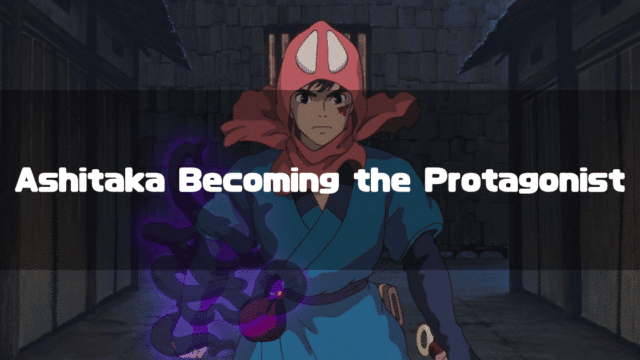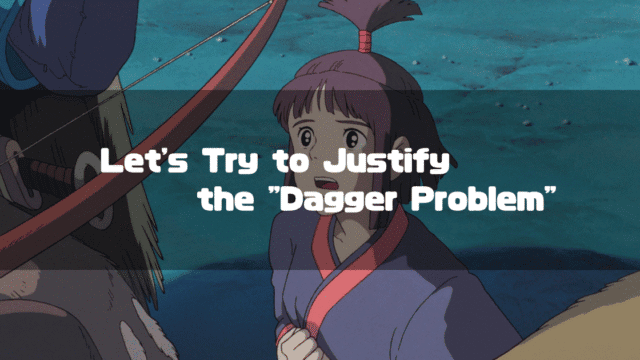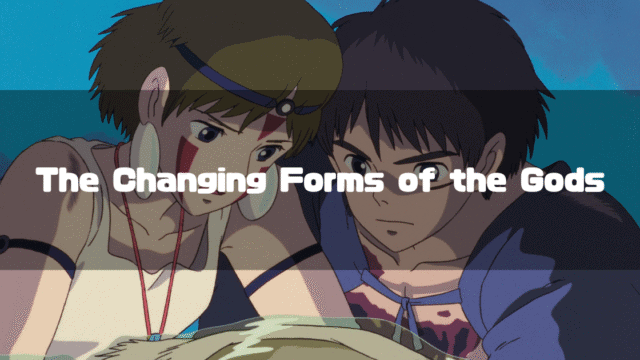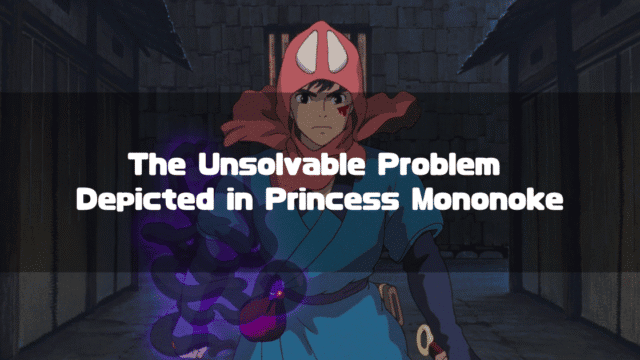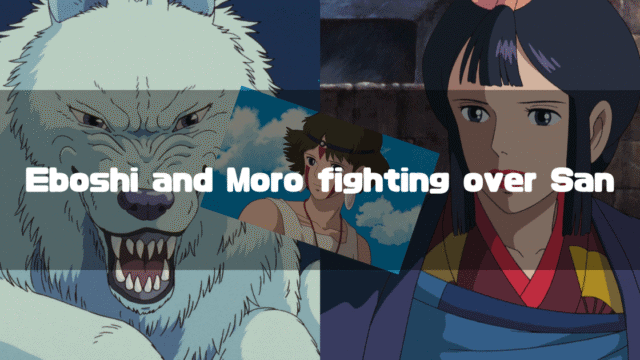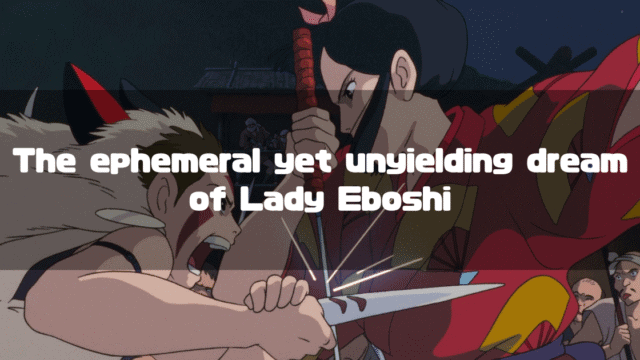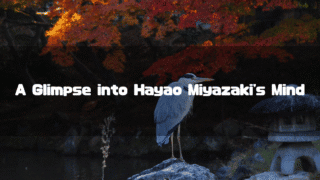Princess Mononoke(Official Studio Ghibli) is a theatrical animated film directed by Hayao Miyazaki, released in 1997.
This time, I’d like to think about the meaning of the words Ashitaka said to San at the end of the story: “He can’t die. He is life itself. He is both life and death.“
Through Hayao Miyazaki’s unique direction, we are made to think, “I kind of get it, but I don’t definitively understand it, but… I feel like that’s okay!”, so we stop thinking about Ashitaka’s words.
It’s not necessarily a bad thing to stop thinking, but this time, I’d like to push forward without doing so.
One important point seems to be that when Lady Eboshi and her group approached the Forest Spirit, for some reason, the Forest Spirit did not stop its transformation into the Night-Walker.
Didn’t you also think when you first saw Princess Mononoke, “It would have been better to deal with Eboshi and her group first and then slowly turn into the Night-Walker“?
Personally, I believe this sense of strangeness is a hint to understanding Ashitaka’s final line.
In this article, I will first present an “interpretation as a change in the Forest Spirit’s nature” using the “sense of strangeness” mentioned above as a hook, and then discuss a completely different interpretation. Since I haven’t been able to confirm any depictions or materials that definitively determine the meaning of Ashitaka’s words, both interpretations are equally plausible to me, and it’s also possible to think that both meanings are included simultaneously.
First, let’s look back at Director Hayao Miyazaki’s testimony to consider the “interpretation as a change in the Forest Spirit’s nature.”
*This article is an English translation of the original Japanese article, 【もののけ姫】「シシ神は死なないよ、命そのものだから」とはどういう意味だったのか?.
Let an AI walk you through the highlights of this post in a simple, conversational style.
-
The “Death” of the Forest Spirit and its Transformation into a “Higher God”
Based on Director Hayao Miyazaki’s testimony, the Forest Spirit is a “lower-class god.” Its disappearance at the end can be interpreted not as death, but as a transformation into an invisible “higher god” that people fear and worship. “Life and death” symbolizes the duality of nature’s blessings and threats. -
Encouragement for San, Who Lost Her Support for Living
Ashitaka’s words are also directed at San, who lost the Forest of the Shishigami, her support for living. It can be seen as a hopeful message to empower the despairing San, meaning, “The forest you protected will surely be revived by the power of the Forest Spirit, who governs both life and death.” -
The Cry of Ashitaka Himself, Who Carries an Unhealed Curse
For Ashitaka, whose cursed scar did not completely heal, the Forest Spirit is his last hope. Therefore, his words can be seen not only as encouragement for San but also as a desperate plea and a cry from his own soul, trying to live on while bearing the “absurdity.”
- Meaning of Ashitaka’s Words ①: An Interpretation as a “Change in the God’s Nature” of the Forest Spirit
- Hayao Miyazaki’s Testimony Regarding the Shishigami (Forest Spirit)
- The Forest Spirit is a Being That Cannot Stop Becoming the Night-Walker – A God as Part of Nature –
- The Higher God as a Formless, Pure Something – What Hayao Miyazaki Couldn’t Embody –
- The Meaning of Ashitaka’s Words – The Disappeared Forest Spirit Became a Higher God –
- Meaning of Ashitaka’s Words ②: An Interpretation as Words Filled with His Feelings for San and His Own Hope
Meaning of Ashitaka’s Words ①: An Interpretation as a “Change in the God’s Nature” of the Forest Spirit
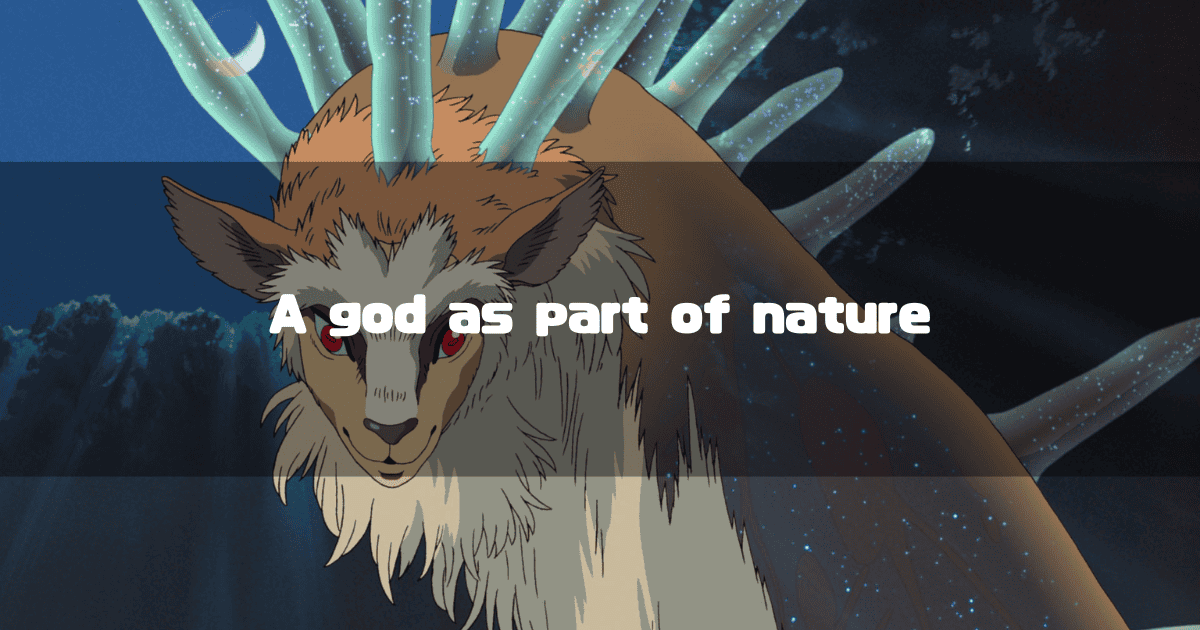
Hayao Miyazaki’s Testimony Regarding the Shishigami (Forest Spirit)
In a conversation with philosopher Takeshi Umehara recorded in Turning Point: 1997-2008(折り返し地点:1997-2008, in Japanese), he answers the direct question, “What is the Shishigami?” as follows:
“Well, it’s a last resort. It’s the ‘Night’. It wanders around, nurturing the forest. During the day, it disappears and exists as a single creature. It’s a rough creation with deer antlers, a human face, bird’s feet, and a goat’s body… Actually, I depicted this Shishigami as a very low-class god. I couldn’t draw anything beyond that, so in the end, I just made it the ‘God of the Forest’. I was thinking there must be higher-class gods.“
(Original Text in Japanese)
「いや、苦し紛れなんです。『夜』なんですけどね。歩き回って森を育てている。昼間は消えて、一つの生き物としてそこにいるんです。鹿の角をはやした、人面と鳥の足と山羊の身体を持ったような、いい加減なものです。・・・実はこのシシ神も、うんと下級の神様として描いたんです。それ以上はもう描けなくて、結局それを最終的に『森の神』ということにしてしまった。もう少し上級神がいるんだろうと思いながら。」
The “Shishigami,” which causes grass to grow from its footsteps, drains life, and transforms into the Night-Walker, is, in fact, a “low-class god.”
This article’s ultimate purpose is to explore the meaning of Hayao Miyazaki’s term “low-class god,” but to understand this statement, I will quote another one.
In Ghibli Textbook 10: Princess Mononoke(ジブリの教科書10 もののけ姫, in Japanese), during “Forty-Four Questions for Director Hayao Miyazaki from Foreign Reporters,” he answers the question, “I’d like to ask about animism; what are your thoughts on religion?” as follows:
“There is a religious feeling that still remains strong in many Japanese people today. It is the belief that deep in our country, there is a very pure place where people must not set foot, where rich water flows out and protects a deep forest. I strongly possess this religious sense that it is most wonderful for humans to return to such a pure place. There is no Bible or saints for it. So, at the level of world religions, it may not be recognized as a religion, but for the Japanese, it is a very certain religious feeling.”
(Original Text in Japanese)
「今でも多くの日本人の中に宗教心として強く残っている感情があります。それは自分たちの国の一番奥に、人が足を踏み入れてはいけない非常に清浄なところがあって、そこには豊かな水が流れ出て、深い森を守っているのだと信じている心です。そういう一種の清浄感があるところに人間は戻っていくのが一番素晴らしいんだという宗教感覚を、僕は激しく持っています。それには聖書もなければ、聖人もいないんです。ですから世界の宗教レベルでは、宗教として認められないけれども、日本人にとっては、非常に確かな宗教心なんです。」
With these statements as hints, I will consider the meaning of Ashitaka’s line.
The Forest Spirit is a Being That Cannot Stop Becoming the Night-Walker – A God as Part of Nature –
To understand the meaning of Ashitaka’s words, let’s first think about the strangeness of the Forest Spirit that many people must have felt.
Why didn’t the Forest Spirit stop becoming the Night-Walker when it was surrounded by those aiming for its head? In fact, because it didn’t stop, its head was shot off by Eboshi and stolen.
Reconsidering this strangeness with the hint of “low-class god,” isn’t it natural to see that “the Forest Spirit cannot *not* become the Night-Walker“?
For the Forest Spirit, the “transformation into the Night-Walker” is a natural phenomenon (a physiological phenomenon) like sleep for us, something that cannot be resisted and is not within its own control.
Thinking this way, the Forest Spirit and we humans seem to be quite continuous existences. Of course, the Forest Spirit clearly possesses transcendent power and is a different being from us, but it seems better viewed not as a “supernatural being (or a being that governs nature)” but as “a part of nature, just like us”.
This is likely what Hayao Miyazaki meant by “low-class god.”
The Higher God as a Formless, Pure Something – What Hayao Miyazaki Couldn’t Embody –
If the Forest Spirit being a “low-class god” is as described above, what kind of existence was the “higher god” that Hayao Miyazaki envisioned?
In the quoted dialogue, there is the expression, “it’s a last resort. It’s the ‘Night’.” I think this means, “I really wanted to draw a ‘higher god’ but couldn’t, so it became the Forest Spirit as a last resort.”
And if so, although it was a “last resort,” there must be hints of the “higher god” in its form.
The statement to note is likely, “It’s the ‘Night’.” In the documentary How Princess Mononoke Was Born(「もののけ姫」はこうして生まれた, in Japanese), the Night-Walker is mentioned as symbolizing “the darkness of night itself.”
Come to think of it, I believe many people have had the experience of sensing “something” in the darkness or feeling a sense of fear in the night’s darkness for no particular reason.
Of course, it’s natural to see this as a “wild instinct to protect oneself from external enemies” remaining within us, but it’s also a fact that the “fear” felt in the dark night gives birth to a certain kind of faith.
And that is ultimately continuous with the “awe” towards “nature” born from threats like “earthquakes,” “typhoons,” and “floods,” and I think it gives rise to a simple “nature worship.” And it’s important that “nature” as the object of such “awe” does not have a distinct, clear form.
In modern times, we have some understanding of the principles behind phenomena like “earthquakes,” “typhoons,” and “floods,” but “nature worship” is not so much “awe” for these specific phenomena as it is a faith in the “something” that hides behind them and causes the phenomena.
Thinking this way, it seems that Hayao Miyazaki tried to depict such an invisible “something.”
However, he did not want to give that “something” an easily understandable human form. I think this is also apparent in the statement from the interview quoted above: “There is no Bible or saints for it.” Giving it a human form would contradict that.
Moreover, it is clear that what Hayao Miyazaki wanted to exclude was not just the image of a “Western god” or a “Christian god.” Since gods in our country’s mythology also have human forms, it means Miyazaki wanted to deny that as well.
And after much effort, he created the “Shishigami,” but he himself was dissatisfied with it (since it was a “last resort”). However, for an ordinary person like me, the design of that “Shishigami” is wonderful enough and not something to be described as a “last resort.”
In the end, the “higher god” that Hayao Miyazaki envisioned is the “something” felt by the “belief that deep in our country, there is a very pure place where people must not set foot, where rich water flows out and protects a deep forest,” and because he could not fully express it, he described the Shishigami as a “low-class god.”
So, what could be the meaning of the Forest Spirit disappearing in the state it was in at the end of Princess Mononoke?
The Meaning of Ashitaka’s Words – The Disappeared Forest Spirit Became a Higher God –
From here, I will finally consider the meaning of Ashitaka’s words, but I need to assume a fact not explicitly depicted in the Princess Mononoke movie, so I will state it clearly. That assumption is:
After the story’s conclusion, no one ever saw the Forest Spirit again.
This is not so much an “assumption” as a given, but I’ve framed it as an “assumption” for emphasis.
Now, what happened to the forest where the Forest Spirit disappeared? In the movie, it only showed a slight recovery, but it’s assumed that over a long time, it once again became a dense forest.
However, isn’t it natural to think that in such a forest, the “Legend of the Shishigami” remained?
The place was originally called the “Forest of the Shishigami,” and a tremendous incident experienced by many people occurred there, so it wouldn’t be strange to think that the fact was passed down through generations.
However, people can never see the form of the Shishigami. The being that certainly existed in the movie, which could even be damaged by a stone-bow, can never be seen by people. But the “Legend of the Shishigami” remains. Perhaps only the name “Forest of the Shishigami” remained.
And if they feel the presence of “something” in the forest, they might feel it is the presence of the Shishigami. If some inexplicable incident occurs in or near the forest, it might be called a curse of the Shishigami. If a “typhoon,” “earthquake,” or “flood” occurs, it might be attributed to the Shishigami. Furthermore, even during peaceful days when nothing happens, they might think, “It is the will of the Shishigami-sama.”
But people will never see the form of the Shishigami.
Can this not be considered as it has become the very “something” that hides behind various disasters and causes those phenomena, and can it not be said that it has become a symbol of “a very pure place where people must not set foot”?
In other words, couldn’t the meaning of Ashitaka’s words be interpreted as follows:
By disappearing, the Forest Spirit became an object of the simple “fear” and “purity” that people feel. This means it has become a higher being, so the Forest Spirit is not dead. And the qualities of “fear” and “purity” symbolize the duality of “life and death”—the “threat” that might drive people to their deaths and the “blessing” that nurtures their lives.
Next, I will consider a completely different interpretation.
Meaning of Ashitaka’s Words ②: An Interpretation as Words Filled with His Feelings for San and His Own Hope
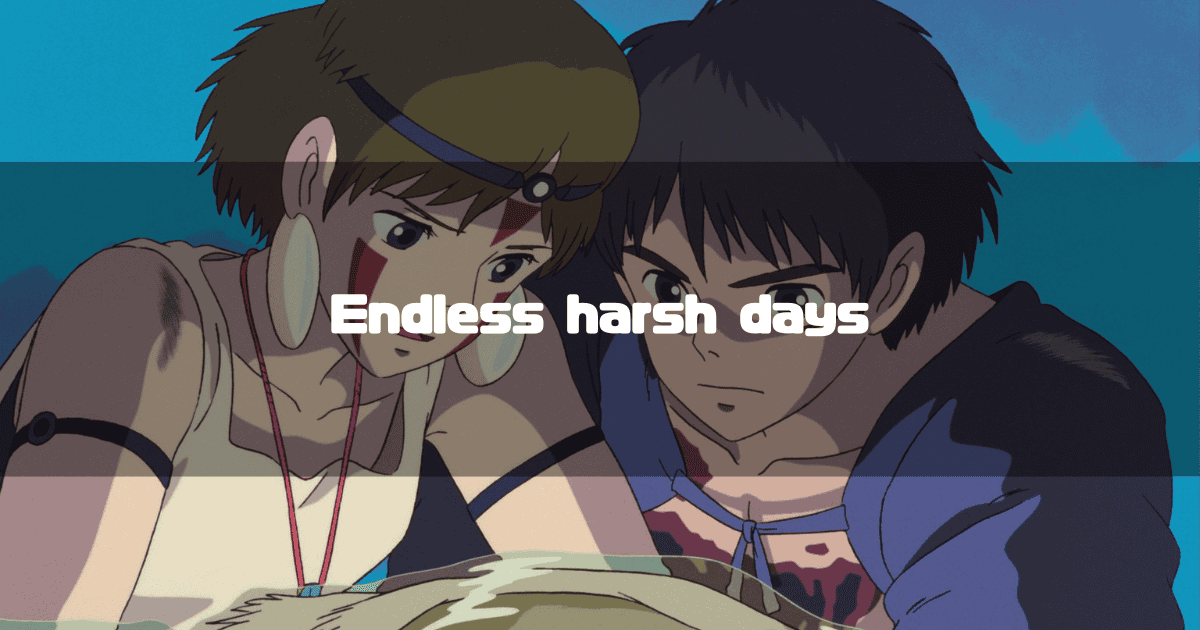
The Forest of the Shishigami as San’s Reason for Living (Yosuga)
There is a perspective that has been completely missing from the discussion so far. It is the perspective of “To whom did Ashitaka direct those words?“
Of course, it was San, but recognizing that, the important fact is that the forest was lost due to the influence of the headless Shishigami (Night-Walker).
That means San lost what she had as her reason for living.
San, who was abandoned by her parents as a baby, calls herself a “wolf” despite looking entirely human. The strong will to “protect the Forest of the Shishigami” was the fundamental support for her contradictory situation of “living as a wolf while being human.”
To San, who has lost that, or at least feels she has lost it, at that moment, wasn’t the only thing Ashitaka could say “The Forest Spirit will not die”? In other words, the meaning of Ashitaka’s words in this context is:
San, there’s no way the Forest Spirit would die! The “Forest of the Shishigami” that you risked your life to protect will be revived as the “Forest of the Shishigami” again. The Forest Spirit possesses the natures of both life and death, you know. Your mother Moro said it too, the Forest Spirit both gives life and takes it away.
Now, we could basically end here, but let’s take our thinking a little further.
The Existence of the Forest Spirit Was Also Hope for Ashitaka
Finally, let’s turn our attention to Ashitaka himself.
Princess Mononoke begins as Ashitaka’s aimless journey to the west after receiving an unjust curse. Guided by Jiko-bo, he finds hope in the “Shishigami,” but faces the despair that it will not heal his curse. He then finds a new meaning in life with San, and ultimately finds a new home in Irontown.
And in the end, Ashitaka’s curse (the scar) never completely disappeared (though it faded considerably).
At the end, Ashitaka seems to have regained a kind of healthiness, as if a weight has been lifted, but he will continue to carry the fact that the scar has not disappeared.
It can be seen that he accepts the scar, or the curse, as a part of himself, but it is quite possible that something continues to nag at the back of his mind, and personally, I think such a possibility is higher.
On the other hand, the only transcendent being with the potential to completely remove Ashitaka’s curse is, after all, the Forest Spirit.
Considering the meaning of Ashitaka’s words in this context, wouldn’t it be as follows:
The Forest Spirit cannot die, no, it must not die. My curse hasn’t been completely healed! The Forest Spirit must surely heal my curse!
This is what should be called a cry of the soul, and what a painful thought it is. It is a bit sad to think that this is what he was thinking at the end of the story, but considering that “absurdity” and “unsolvable problems” are one of the themes of Princess Mononoke, it is actually not that strange. It is not a story where “Yes! Everything is resolved!”
Now, I have considered three possibilities for Ashitaka’s words, but they are not particularly contradictory to each other. Rather, I think it is natural to consider that his words contained a combination of these things.
What do you all think is the meaning of Ashitaka’s words, “He can’t die. He is life itself. He is both life and death.”?
The images used in this article are from the Studio Ghibli Still Images collection.
About the Author
Recent Posts
- 2025-10-21
Indiana Jones and the Dial of Destiny(2023): Full Synopsis & Analysis: Indy’s True Motive and the Enigma of Helena - 2025-10-15
Indiana Jones and the Dial of Destiny(2023):Historical Background-WWII, the Real Dr. Schmidt, the Siege of Syracuse, and the Antikythera Mechanism - 2025-10-08
Why Does Children Who Chase Lost Voices Feel So Ghibli-esque? [Makoto Shinkai’s “Tale of Farewell”] - 2025-10-07
5 Centimeters per Second: Characters, Voice Actors, Character Analysis and Character Map - 2025-10-06
5 Centimeters per Second: Full Synopsis, Analysis, Ending Explained & Character Map (Spoilers)

